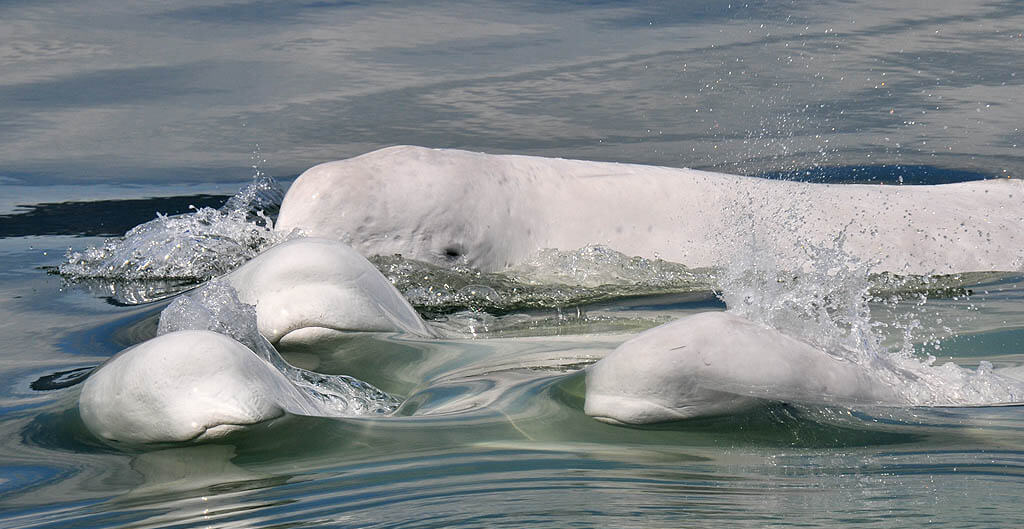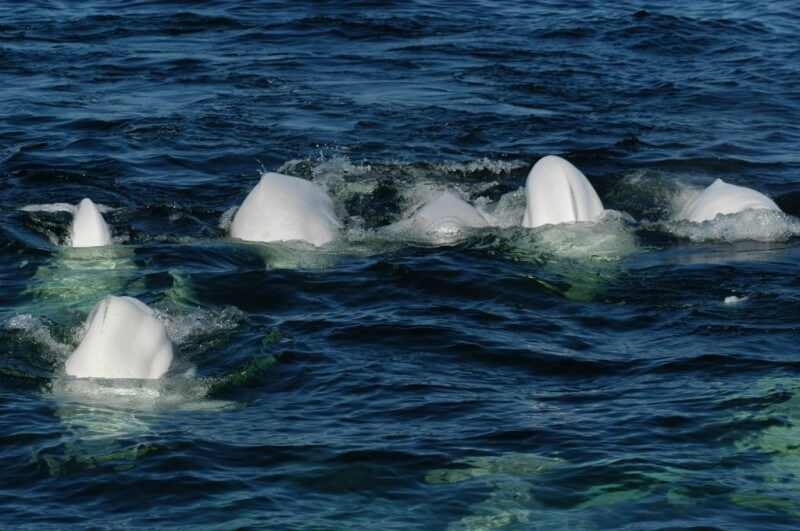Serenade
The song of the humpback whale is divided into musical phrases that are repeated to form themes. A series of successive themes in a specific order composes a song, which can last anywhere from a few minutes to a half hour. During the mating season, the male sings highly complex musical phrases: it seems that this helps him charm females while intimidating other males.
How do they produce these sounds?
Even if toothed whales have structures equivalent to vocal cords in their larynx, the overwhelming majority of sounds is produced in the nasal tract under the blowhole. Air that enters this tract triggers the movement of thick membranes – the phonic lips – causing the surrounding tissues to vibrate and creating the sound. The vibration then passes through the skull to reach the melon, a fatty sound box in the forehead, which modulates and focuses the sound beam in the water, while the air, having passed through the phonic lips, is released through the blowhole or sent back to the nasal apparatus in order to be reused to emit a new sound. The animal is thought to be able to control these vibrations with great accuracy.
Except for the sperm whale, all toothed whales have two pairs of phonic lips and can therefore emit two sounds simultaneously. In certain species of dolphins, it has even been discovered that the right pair of phonic lips seems to produce mainly echolocation sounds and the left pair, whistles.
Baleen whales seem to lack this type of structure. Their larynx may play a role in sound production, but the mechanism remains poorly understood, partially due to the challenge of studying these giant animals that are not kept in captivity.





